How To Buy the Right Cuts of Steak
A fundamental definition of “steak” is a slice of meat cut from an animal. Okay, that may be a little too simplistic. While other meats can be considered “steak” (ham steak, swordfish steak), I’d like to focus on steaks cut from beef.
Let’s clarify it a little further…my definition of steak is meat suitable for high heat and dry cooking methods, such as grilling, broiling, or pan-frying. Marinating is fine, but it doesn’t make the cut if a steak can only be rendered tender and edible through braising or stewing.
Considering that steak is all cut from the same animal, there are many differences in flavor, tenderness, and price among all the different cuts. However, to my untrained eye, most steaks look the same: red with white fat and sometimes bone. Many regional names can be called the same cuts to add more confusion.
I will try to cut through all of the confusion and present the various cuts of steak by location on the animal, by name with regional variations, by tenderness/toughness, by flavor profile, and by price point.
Whew! We will both be experts at the end of this!
Where to Start
Starting at the head of the cow and across the top half (to mid-chest), these are the basic cuts of meat.
In extensive strokes, the meat cut from the chuck, brisket, plate, round, and shank will be much tougher than the meat cut from the rib, loin, and flank sections. This is because those cuts are comprised of muscles that work hard.
The harder a muscle is worked when the animal is alive and walking around, the tougher the meat will be. On the positive side, these cuts are generally cheaper and have a greater depth of flavor.
The trick is knowing how to treat each steak to get your money’s worth, no matter what you have paid per pound. That’s what I’ll try to help you understand.
(Be sure to check out my Pinterest Meat Charts)
Chuck Steak
Chuck steak is a flavorful cut of beef derived from the shoulder area of the cow, known for its rich taste and affordability. This steak, often considered a budget-friendly option, offers a delightful combination of meat and marbling, contributing to its robust flavor profile.
The marbling, or fat interspersed within the muscle, helps keep the meat tender and juicy during cooking, making it a popular choice for various dishes. The rich taste of chuck steak is sure to elevate your culinary creations.
While chuck steak can be a bit tougher than more premium cuts like ribeye or tenderloin, its intense flavor makes it ideal for slow-cooking methods. Braising, stewing, or cooking in a slow cooker allows the connective tissues within the meat to break down, resulting in a tender and succulent dish. Chuck steak is also well-suited for ground beef, providing a rich taste to burgers and meatloaf.
When preparing chuck steak, marinating enhances its tenderness and flavor. Popular recipes include pot roast, beef stew, and stir-fries, where the meat’s hearty nature pairs well with various vegetables and seasonings. Chuck steak is a versatile and economical choice for those seeking delicious, beefy dishes without breaking the bank.
Rib Steaks
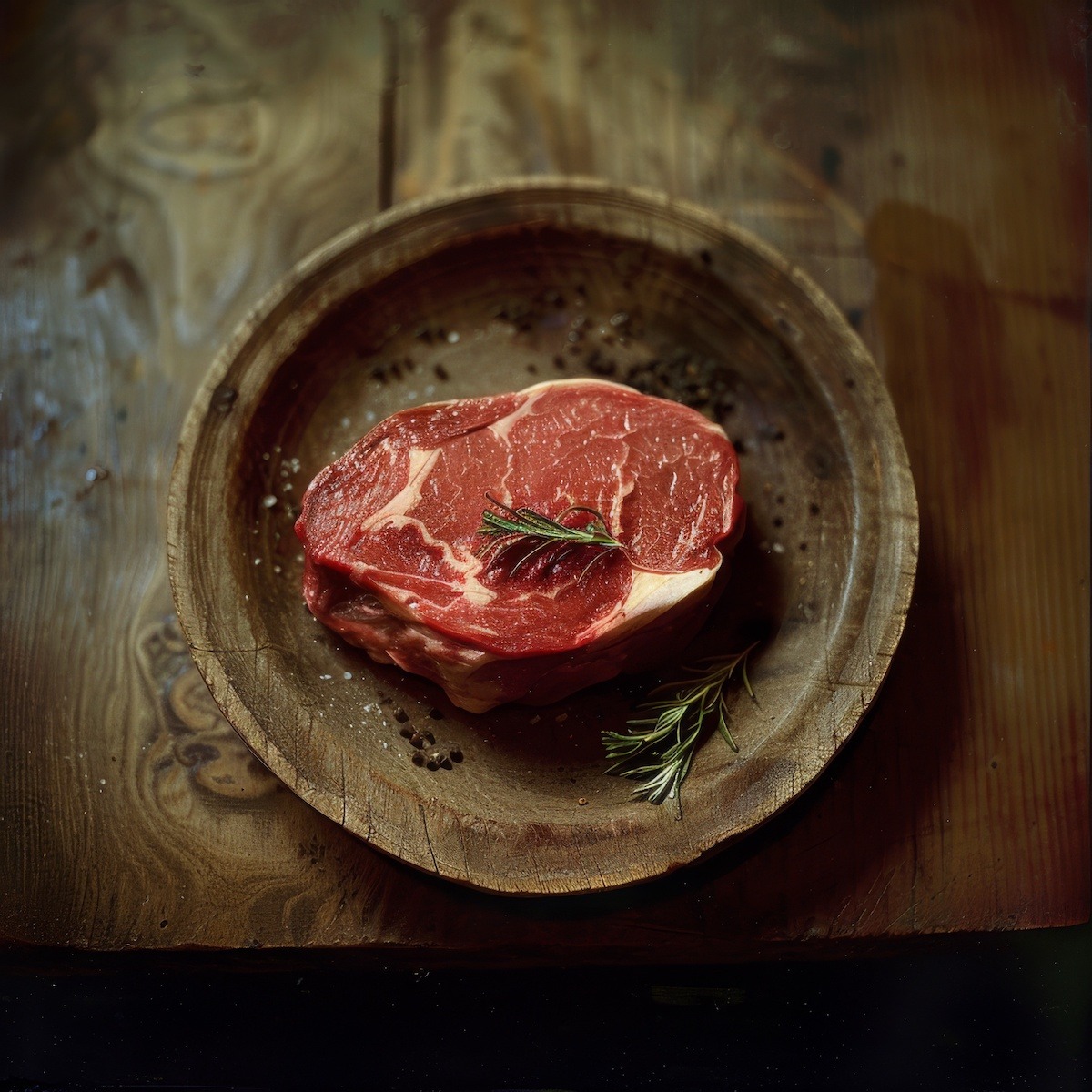
Rib steaks, also known as ribeye steaks when the bone is removed, are renowned for their exceptional flavor and tenderness. Sourced from the cow’s rib section, specifically ribs six through twelve, this cut is prized for its rich marbling, consisting of fat streaks running through the meat. This marbling enhances the steak’s flavor and contributes to its juiciness and tender texture, making it a favorite among steak enthusiasts.
The rib steak’s characteristic marbling melts during cooking, infusing the meat with a buttery, rich, satisfying, and indulgent taste. Its natural tenderness means it requires minimal seasoning, often needing only a simple sprinkle of salt and pepper to bring out its best qualities. Rib steaks are incredibly versatile and can be prepared using various cooking methods, including grilling, pan-searing, or broiling.
The steak’s high-fat content makes it well-suited for high-heat cooking, which creates a beautiful crust while keeping the interior moist and flavorful. Whether served at a backyard barbecue or a fine dining establishment, rib steaks deliver a luxurious and memorable dining experience. Paired with classic sides like roasted vegetables or mashed potatoes, they make for a hearty and indulgent meal.
Loin Steaks
Loin steaks, often referred to as strip steaks, New York strip, sirloin steaks, t-bones, and filet mignon, are prized cuts of beef known for their tenderness and robust flavor. These steaks come from the loin section of the cow, which is located along the backbone and runs from the rib to the sirloin. This area of the cow is less worked compared to other muscles, resulting in a tender and juicy piece of meat.
Loin steaks are characterized by their fine grain and substantial marbling, which contribute to their rich, beefy flavor and succulent texture. They are typically thicker cuts, making them perfect for grilling, broiling, or pan-searing. Their natural tenderness means they require minimal seasoning, often just a dash of salt and pepper, allowing the meat’s inherent flavors to shine.
It’s important to avoid overcooking when cooking loin steaks to maintain their tender texture. Medium-rare to medium is the recommended doneness for these steaks, ensuring they remain juicy and flavorful.
Loin steaks are versatile and can be paired with various side dishes, such as sautéed mushrooms, roasted potatoes, or a crisp green salad. Whether enjoyed at a high-end steakhouse or cooked at home, loin steaks offer a consistently satisfying and indulgent dining experience.
Flank Steaks
Flank steak is a lean, flavorful cut of beef taken from the cow’s abdominal muscles, specifically below the loin and between the rib and hip sections. Known for its pronounced beefy taste, flank steak is a favorite for dishes that benefit from its rich, robust flavor and relatively low-fat content. It has a long, flat shape with distinctive grain patterns, which make it easily identifiable.
Due to its leanness and muscle structure, flank steak can be somewhat tough if not prepared correctly. To ensure tenderness, it is essential to marinate the steak before cooking. Marinades infuse the meat with additional flavors and help break down some muscle fibers. Common marinade ingredients include citrus juices, vinegar, soy sauce, herbs, and spices.
Flank steak is best cooked using high-heat methods like grilling, broiling, or pan-searing. It should be cooked to medium-rare or medium to prevent it from becoming overly tough. After cooking, it’s crucial to let the steak rest and slice it thinly against the grain. This technique further helps in achieving a tender bite.
Popular dishes featuring flank steak include fajitas, stir-fries, and London broil. Its versatility and flavor make it a popular choice for casual weeknight meals and special occasions, offering a satisfying beefy taste in a lean package.
Round Steaks
Round steak is a versatile and economical cut of beef sourced from the cow’s rear leg and rump area known as the round. This area is well-exercised, resulting in lean meat with minimal marbling, making it more challenging than other steak cuts. However, round steak is prized for its rich, beefy flavor and affordability, making it a popular choice for various culinary applications.
Round steak is typically divided into sub-cuts, including top round, bottom round, eye of round, and round tip. Each of these cuts offers unique characteristics, but all share the common trait of being lean and relatively tough. To ensure tenderness, round steak benefits from slow-cooking methods such as braising, roasting, or simmering, which help break down the muscle fibers and connective tissues.
Marinating round steak before cooking can also enhance its tenderness and flavor. Common marinade ingredients include soy sauce, vinegar, citrus juices, and herbs and spices. Avoiding overcooking, which can lead to dryness, is essential.
Round steak is commonly used in Swiss steak, beef stroganoff, and pot roast dishes. It can also be sliced thinly for stir-fries or used in sandwiches. Despite its toughness, round steak can be transformed into a delicious and satisfying meal with proper preparation.
Cuts Not Typically Known for Steaks
Brisket
Brisket comes from the breast or lower chest of the cow, specifically the pectoral muscles. This area supports a significant portion of the cow’s weight, resulting in a cut rich in connective tissue and tough fibers. However, with proper cooking techniques, brisket can be transformed into an exceptionally tender and flavorful dish.
The brisket is typically divided into two main parts: the flat and the point cut. The flat cut, also known as the “first cut,” is leaner and more uniform, making it easier to slice. The point cut, or “second cut,” is thicker, with more marbling and connective tissue, providing a richer flavor but requiring longer cooking times to become tender.
Due to its toughness, brisket benefits from slow, low-temperature cooking methods. Common preparation techniques include braising, smoking, and slow roasting. These methods help break down the collagen in the connective tissue, resulting in a tender, melt-in-your-mouth texture. Popular dishes featuring brisket include barbecue brisket, corned beef, and braised brisket.
Brisket’s rich, beefy flavor makes it a favorite for barbecue enthusiasts and home cooks. When properly cooked, it offers a profoundly satisfying, hearty meal.
Short Plate
The short plate is a flavorful cut of beef located on the lower front section of the cow, just below the rib and between the brisket and the flank. It is known for its rich, beefy taste and a good amount of fat content, which contributes to its succulence and juiciness when cooked. The short plate is a versatile cut that is used in a variety of dishes and culinary traditions.
One of the most well-known cuts from the short plate is skirt steak, which is prized for its intense flavor and relatively loose, grainy texture. Skirt steak is often used in fajitas, stir-fries, and grilling favorites. It’s best cooked quickly over high heat and sliced against the grain to maximize tenderness.
Another popular cut from the short plate is the hanger steak, sometimes referred to as the “butcher’s steak” because butchers would often keep it for themselves due to its superior flavor. Hanger steak is tender and well-marbled, making it excellent for grilling or pan-searing.
The short plate also provides beef short ribs, which are known for their rich taste and melt-in-your-mouth texture when slow-cooked. These ribs are perfect for braising, smoking, or barbecuing.
The short plate offers a range of cuts celebrated for their robust flavor and versatility in various cooking methods, from quick searing to slow, flavorful braises.
Skirt Steak
Skirt steak is a flavorful and versatile cut of beef taken from the cow’s diaphragm muscle, specifically from the plate section, located below the ribcage and between the brisket and flank. Known for its intense beefy flavor and distinctive grain, skirt steak is a favorite among chefs and home cooks.
There are two types of skirt steak: the inside skirt and the outside skirt. The inside skirt is closer to the cow’s internal organs, while the outside skirt is on the plate section’s outer side. Both cuts are long, flat, and prized for their robust taste, though the outside skirt is generally considered more tender and desirable.
Due to its loose, coarse texture, skirt steak is well-suited for marinades, which can help tenderize the meat and infuse it with additional flavors. Common marinade ingredients include citrus juices, vinegar, garlic, soy sauce, herbs, and spices.
Skirt steak is best cooked quickly over high heat to prevent it from becoming tough. Grilling, broiling, or pan-searing are ideal methods, and they should be cooked to medium-rare or medium for optimal tenderness. After cooking, it’s crucial to let the steak rest briefly before slicing it thinly against the grain to enhance its tenderness.
Popular dishes featuring skirt steak include fajitas, tacos, and stir-fries, where its bold flavor and tender texture can shine. Its versatility and rich taste make skirt steak a favorite for everyday meals and special occasions.
Plate steaks
Plate steaks, also known as beef plate cuts, come from the plate section of the cow, located in the lower front part of the animal, between the brisket and the flank and beneath the ribcage. This section is known for its rich, beefy flavor and relatively high fat content. This area contains the following:
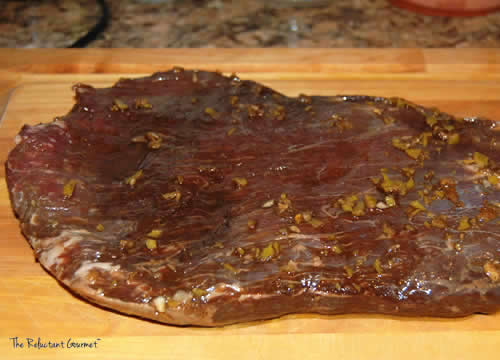
Skirt Steak
Skirt steak is a flavorful and versatile cut of beef taken from the cow’s diaphragm muscle, specifically from the plate section, located below the ribcage and between the brisket and flank. Known for its intense beefy flavor and distinctive grain, skirt steak is a favorite among chefs and home cooks.
There are two types of skirt steak: the inside skirt and the outside skirt. The inside skirt is closer to the cow’s internal organs, while the outside skirt is on the plate section’s outer side. Both cuts are long, flat, and prized for their robust taste, though the outside skirt is generally considered more tender and desirable.
Due to its loose, coarse texture, skirt steak is well-suited for marinades, which can help tenderize the meat and infuse it with additional flavors. Common marinade ingredients include citrus juices, vinegar, garlic, soy sauce, herbs, and spices.
Skirt steak is best cooked quickly over high heat to prevent it from becoming tough. Grilling, broiling, or pan-searing are ideal methods, and they should be cooked to medium-rare or medium for optimal tenderness. After cooking, it’s crucial to let the steak rest briefly before slicing it thinly against the grain to enhance its tenderness.
Popular dishes featuring skirt steak include fajitas, tacos, and stir-fries, where its bold flavor and tender texture can shine. Its versatility and rich taste make skirt steak a favorite for everyday meals and special occasions.
Hanger Steak
They are often called the “butcher’s steak” because butchers often keep it for themselves due to its exceptional flavor. The hanger steak is tender and well-marbled, making it ideal for grilling or pan-searing. When cooked properly, it has a strong, beefy taste and a tender texture.
Short Ribs
Cut from the plate section, beef short ribs are known for their rich, beefy flavor and melt-in-your-mouth texture when slow-cooked. They are perfect for braising, smoking, or barbecuing.
Plate Short Ribs
Similar to short ribs, these are cut across the bone rather than along it. They are often used in dishes like Korean BBQ (kalbi) due to their rich flavor and tenderness when marinated and grilled.
Denver Steak
Denver steaks are cut from the underblade section of the chuck, which is near the plate. They are relatively tender with a good amount of marbling and suitable for grilling, pan-searing, or broiling.
Flanken Cut Ribs
A cross-section of the short ribs cut thin across the bone. This cut is popular in Asian cuisine, especially for Korean BBQ (kalbi), where it is marinated and quickly grilled.
Shank
The flank is a flavorful and versatile cut of beef taken from the lower abdominal muscles of the cow, specifically situated between the rib and the loin and near the rear leg. This cut is known for its robust, beefy flavor and distinctive, long grain. Flank steak, the primary cut from this section, is relatively lean, with minimal marbling, making it tougher than other cuts.
Due to its lean nature, flank steak benefits significantly from marination. Marinades, which often include acidic ingredients like citrus juices, vinegar, or wine, help tenderize the meat while infusing it with additional flavors. Popular marinades might include soy sauce, garlic, herbs, and spices.
Flank steak is best cooked quickly at high temperatures. Grilling, broiling, or pan-searing are ideal methods, as they create a delicious crust while keeping the inside juicy and tender. To enhance tenderness, it is crucial to cook the flank steak to medium-rare or medium doneness and to let it rest before slicing. The meat should be sliced thinly against the grain to break up the muscle fibers and make it easier to chew.
Flank steak’s versatility makes it popular for various dishes, including fajitas, stir-fries, tacos, and London broil. Its rich flavor pairs well with bold seasonings and marinades, making it a favorite for casual meals and special occasions. Proper preparation can yield a tender and satisfying result despite its tougher texture.
Now that you know which steaks are cut from where, let’s compare them all in terms of cost, flavor, tenderness, and alternate names. Pricing is based on cost/pound from one website and is strictly for comparison purposes.
Let’s Get A Little More Specific
That is an exhaustive look at many cuts of steak, including ones you may never have heard of. Now, let’s look at some of the characteristics of the more well-known steaks: filet Mignon, Porterhouse, T-bone, skirt steak, and flank steak.
All of these steaks are cut from the “center section” of the animal, the filet, Porterhouse, and T-bone from the back of the animal, and the skirt steak and flank steak from the belly.
Coming from the middle of the animal, these cuts are generally more tender than cuts closer to the head and the legs. That makes them well suited to dry-heat cooking methods.
Filet Mignon
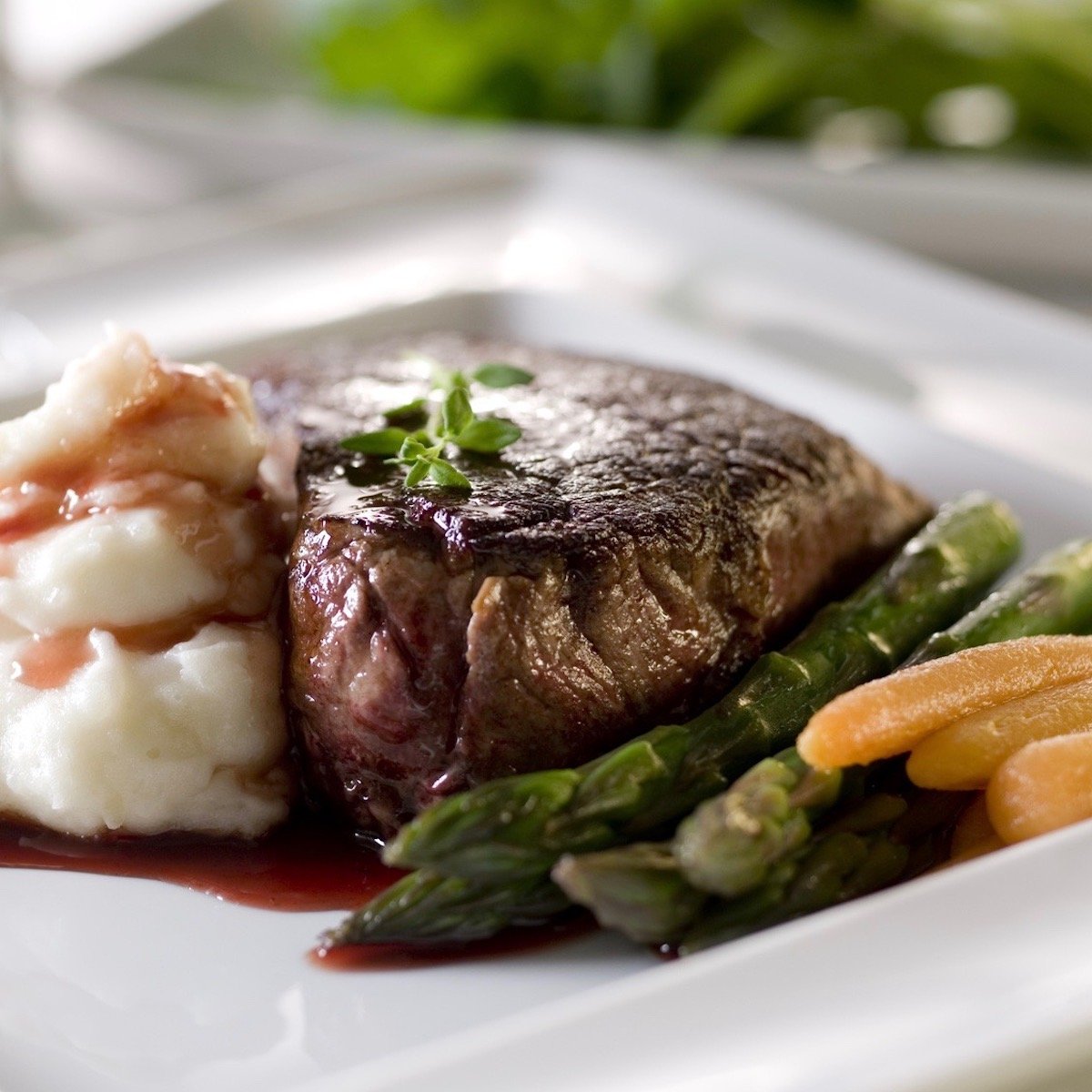
Filet mignon, often regarded as the king of steaks, is a cut of beef taken from the smaller end of the tenderloin, a muscle that runs along the cow’s spine. Known for its exceptional tenderness and fine grain, filet mignon is a highly sought-after cut prized for its melt-in-the-mouth texture and delicate flavor. Unlike other steaks, filet mignon has minimal marbling, which is leaner but still incredibly succulent.
The tenderloin is a muscle that does very little work, contributing to its tenderness. Due to its mild flavor, filet mignon is often complemented with rich sauces or wrapped in bacon to enhance its taste. Classic accompaniments include béarnaise sauce, red wine reduction, or a simple compound butter.
Filet mignon is typically prepared using dry-heat methods such as grilling, broiling, or pan-searing. These methods allow for a beautifully seared exterior while keeping the interior tender and juicy. It is usually cooked to medium-rare or medium to ensure it remains tender and flavorful.
Despite being one of the most expensive cuts of beef, filet mignon’s unparalleled tenderness and elegant presentation make it a popular choice for fine dining and special occasions. It pairs well with various sides, from classic mashed potatoes and asparagus to more sophisticated options like truffle risotto or a crisp green salad. This cut’s luxurious texture and refined taste ensure a memorable dining experience.
Porterhouse Steak
Porterhouse steak is a premium cut of beef that combines the best of two worlds: the tender filet mignon and the flavorful strip steak. Sourced from the short loin section of the cow, the porterhouse is distinguished by its T-shaped bone, which separates these two prized cuts. This steak is larger than a T-bone and contains a more substantial portion of tenderloin, making it a favorite among steak enthusiasts.
The porterhouse’s unique combination of textures and flavors makes it a standout choice for those seeking a luxurious dining experience. The tenderloin portion, known for its buttery tenderness, contrasts beautifully with the rich, beefy taste of the strip steak. This duality offers a satisfying and diverse eating experience in a single cut.
Porterhouse steak is best cooked using dry-heat methods such as grilling, broiling, or pan-searing to maximize its flavor and tenderness. These techniques help develop a flavorful crust while keeping the meat juicy. It’s typically cooked to medium-rare or medium doneness, ensuring both sections are tender.
Porterhouse steak is often served with classic accompaniments like roasted vegetables, mashed potatoes, or a crisp green salad. Its impressive size and combination of textures make it ideal for sharing, making it a popular choice for special occasions and fine dining. Porterhouse steak delivers a memorable and indulgent meal with its rich flavor and tender texture.
T-Bone Steak
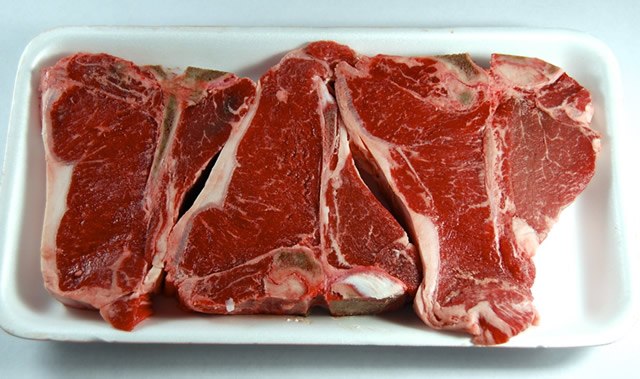
The T-bone steak is a renowned and luxurious cut of beef known for its distinctive T-shaped bone, which separates two of the most prized cuts of steak: the tenderloin and the strip steak. Sourced from the short loin section of the cow, the T-bone combines the rich, beefy flavor of the strip steak with the delicate, buttery tenderness of the filet mignon.
This steak’s unique combination offers a delightful variety of textures and flavors in a single cut. The strip steak portion is known for its robust, beefy taste and firmer texture, while the tenderloin side is celebrated for its exceptional tenderness and mild flavor. This makes the T-bone steak popular among steak lovers seeking a well-rounded eating experience.
To best enjoy a T-bone steak, it is typically cooked using dry-heat methods such as grilling, broiling, or pan-searing. These methods help to develop a flavorful, caramelized crust while keeping the interior juicy and tender. The steak is usually cooked to medium-rare or medium doneness to ensure both portions are at their best.
T-bone steak is often accompanied by classic sides like baked potatoes, sautéed mushrooms, or a fresh green salad. Its impressive presentation and the combination of two premium cuts make it an excellent choice for special occasions and fine dining. The T-bone steak promises a memorable and satisfying meal with its rich flavor and varied textures.
Helpful Comparison Chart
| SECTION | CUT | AKA | FLAVOR | TENDERNESS |
|---|---|---|---|---|
| Chuck | Seven Bone | Center Chuck | Rich/Beefy | Tough |
| Chuck | Chuck Eye | Mock Tender | Rich/Beefy | Most tender part of chuck |
| Chuck | Shoulder | English | Rich/Beefy | Tough |
| Chuck | Top Blade | Flat Iron, Book | Rich/Beefy | Fairly tough |
| Rib | Rib Eye | Delmonico, Market | Good Beef | Fairly tender & marbled |
| Rib | Rib Steak | Club | Good Beef | Fairly tender & lean |
| Loin | Filet Mignon | Tenderloin | Delicate Beefy | Very tender, very lean |
| Loin | Porterhouse | Porterhouse | Delicate Beefy | Tender & lean |
| Loin | Sirloin | Pin Bone, Flat Bone | Good beefy flavor | Fairly tender to fairly tough |
| Loin | T-Bone | T-Bone | Delicate in loin, tender in strip | Fairly tender & fairly lean |
| Loin | Top Loin | NY Strip, Kansas City, Ambassador, Club, Hotel Steak | Beefy & Flavorful | Fairly tender & fairly lean |
| Loin | Boneless Top Sirloin | ——– | Beefy to fairly mild | Fairly tender & lean, quality varies |
| Loin | Tri-Tip | Beefy & flavorful | Somewhat tough | |
| Round | Eye Round | Minute / Breakfast Steak | Beefy & flavorful | Tough |
| Round | Top Round | London Broil | Beefy & flavorful | Tough |
| Round | Round Tip | Ball Tip | Beefy & flavorful | Fairly tough |
| Short Plate | Skirt | Philly Steak | Beefy & flavorful | Tough |
| Flank | Flank | Flank | Beefy & flavorful | Tender |
| Flank | Hanger | Butcher, Hanging Tenderloin | Very beefy & flavorful | Somewhat tough |

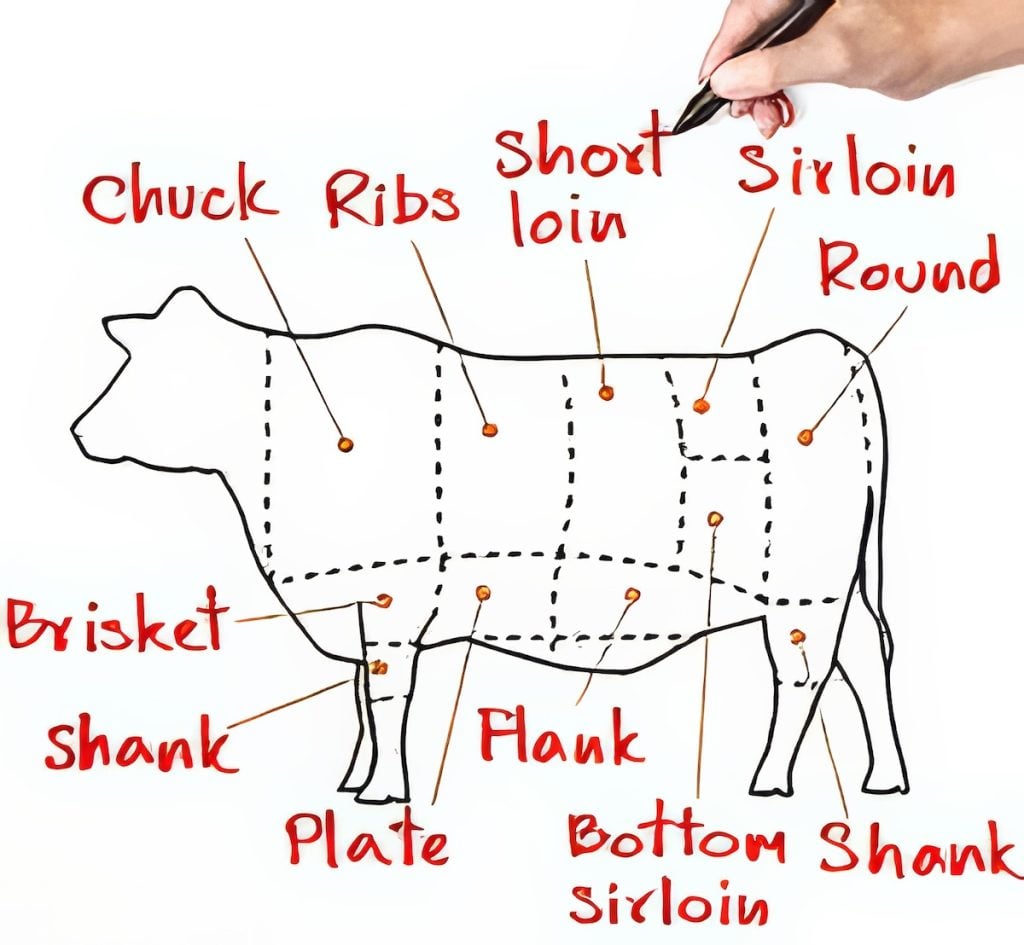
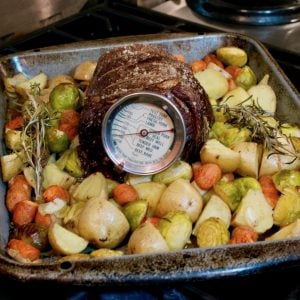

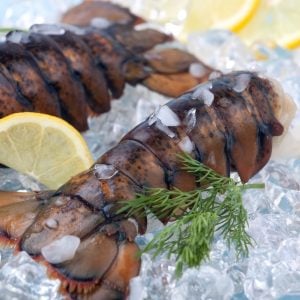

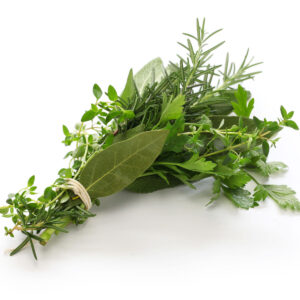
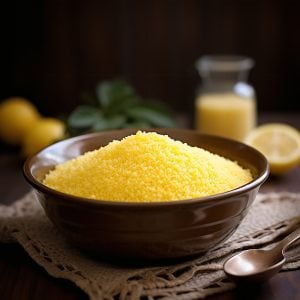





2 Responses
Wow, what a comprehensive list! Thank you
Thank you. I learned something.